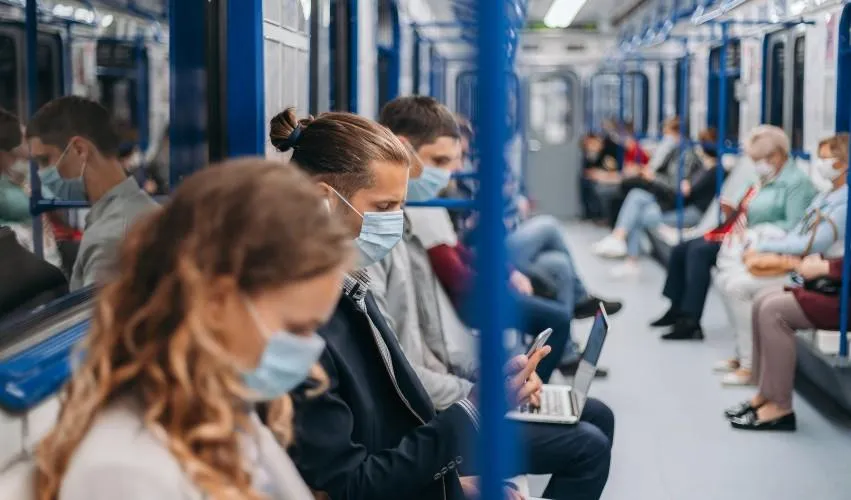
Commuting Flows, Not the Transport Mode, Help COVID Spread
Bergamo is the Italian city that at the peak of the first wave of COVID, in March 2020, recorded the highest excess mortality compared to the average for the same period in the previous five years. In that month, deaths (+428.95%) more than quintupled. Bergamo is also the Italian city with the highest rate of commuters with respect to the resident population: adding the incoming and outgoing commuters, it comes to 52.4% of the population, according to data of the last census.
These figures prompted Marco Percoco and Mattia Borsati of GREEN, the Center for Research on Geography, Resources, Environment, Energy and Networks at Bocconi, and Michele Cascarano (Bank of Italy) to investigate the link between commuter flows and the spread of the pandemic, concluding that there would have been 2,300 fewer deaths in the peak months of the pandemic (1,300 lives saved in March and 1,000 in April) if commuter flows in Italian cities were 10% lower.
"A city's connection to the surrounding area and commuting flows are positive features in normal times, indices of economic vibrancy that turns into wealth and well-being, but they proved fatal with the pandemic," explains Professor Percoco, Director of GREEN. "These variables also help explain why the coronavirus spread faster in Northern than in Southern Italy: in the North, in fact, commuting flows are very strong even in relatively small cities such as Bergamo, Lodi or Lecco."
The result also suggests that the regional scale, at which most restrictions to fight the pandemic are decided today, is too broad. "Interventions in highly connected cities with a manufacturing structure that makes smartworking problematic should be prioritized," Prof. Percoco continues.
In a second research paper, the same Percoco and Borsati along with Silvio Nocera (IUAV Venice) found that commuting flows have multiplicative effects on the spread of COVID regardless of the mode of transportation used by commuters. "In other words," Prof. Percoco explains, "while the relationship between mobility and contagion is clear, we did not find a stronger relationship in cities where public transport is more widespread. Mobility, and not the choice of public transport, is one of the most important drivers of contagion. This does not mean that we can be less cautious on public transport, but that we must be equally cautious when using other modes."
The two papers are part of the Bocconi COVID Crisis Lab.
Excess mortality and commuting in North Italian cities
| City | Excess mortality | Commuters | City | Excess mortality | Commuters |
| Bergamo | 428.95% | 52.84% | Aosta | 83.94% | 35.90% |
| Lodi | 348.20% | 45.84% | Bolzano | 59.84% | 25.37% |
| Lecco | 154.50% | 48.13% | Torino | 36.99% | 22.91% |
| Milano | 86.18% | 36.59% | Trieste | 17.58% | 9.43% |
Mattia Borsati, Michele Cascarano, Marco Percoco, 2020. "Resilience to health shocks and the spatial extent of local labourmarkets: evidence from he Covid-19 outbreak in Italy". GREEN Working Paper Series ISSN 1973-0381, n. 12.
Mattia Borsati, Silvio Nocera, Marco Percoco, 2020. "Questioning the spacial association between the spread of Covid-19 and transit usage in Italy". GREEN Working Paper Series ISSN 1973-0381, n. 11.